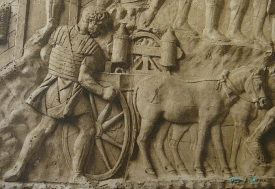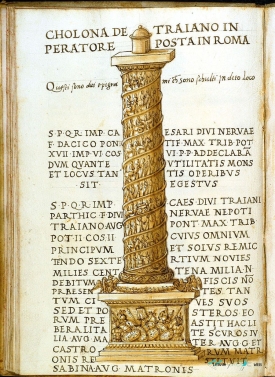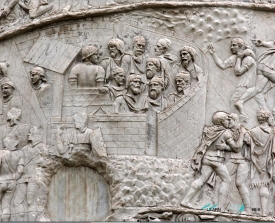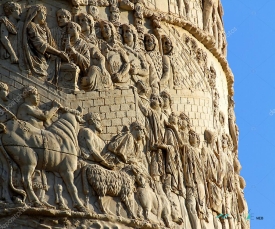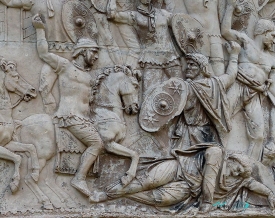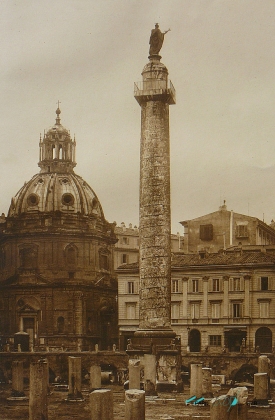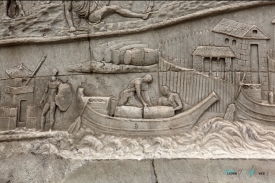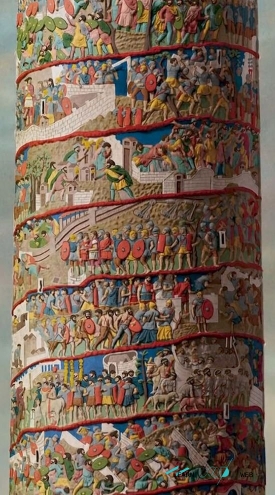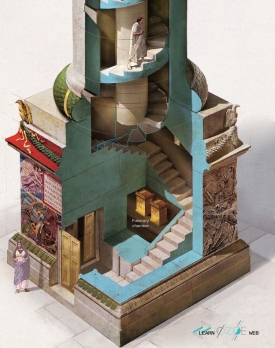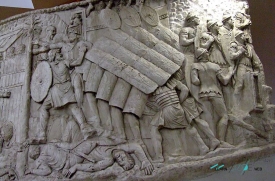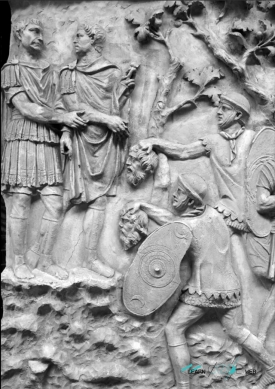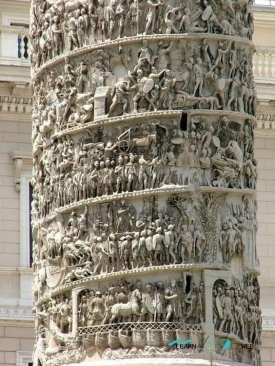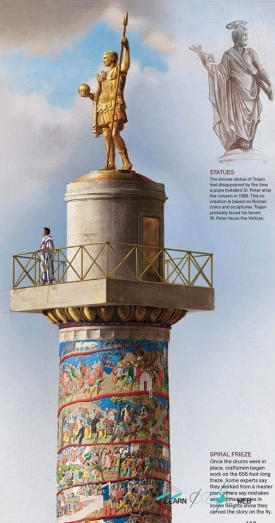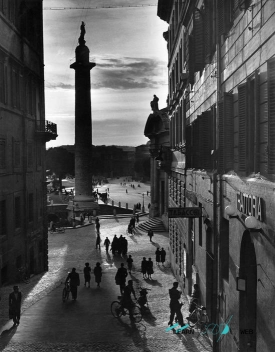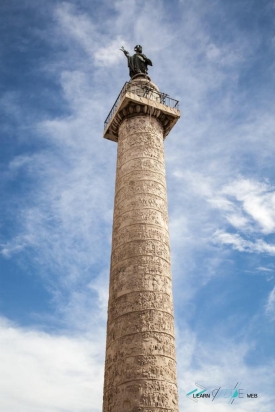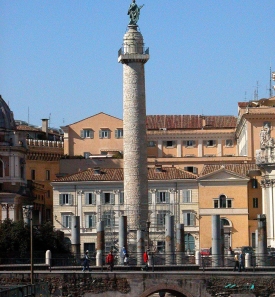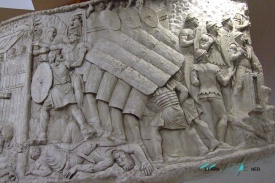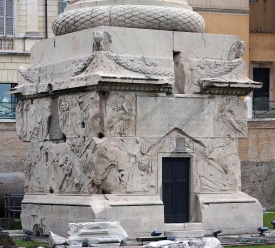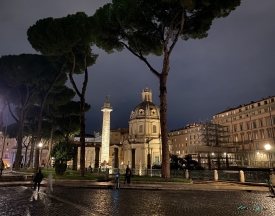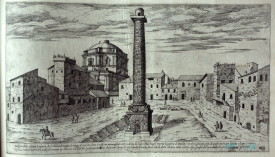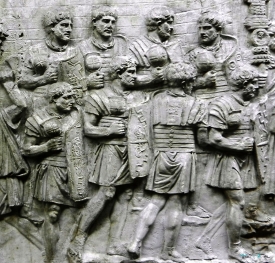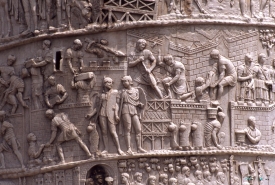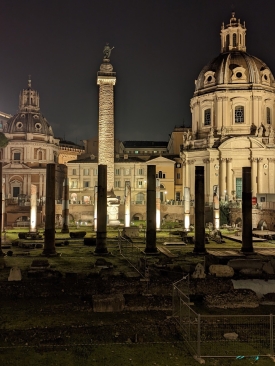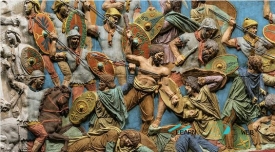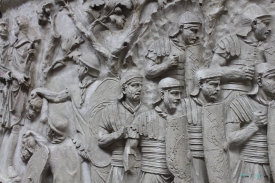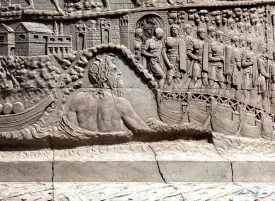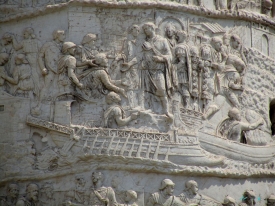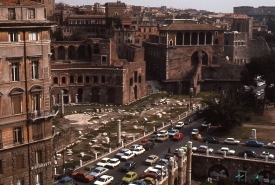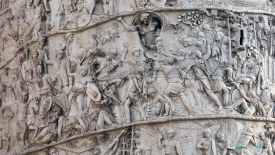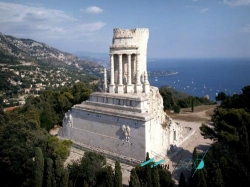ABOUT Column of Trajan
Trajan's Column is a Roman triumphal column located in Rome, Italy. It was built to commemorate the victory of the Roman Emperor Trajan in the Dacian Wars, which took place between 101 and 106 AD. The column was completed in 113 AD and has been standing for nearly 1900 years.
The column stands 30 meters (98 feet) tall and is made of white marble. It consists of a series of 23 spiraling bands of low relief sculptures that wind around the column from its base to its capital. The reliefs depict scenes from Trajan's military campaigns against the Dacians, including battles, sieges, and other military operations.
The column was designed by the Roman architect Apollodorus of Damascus and was built on a pedestal in the center of Trajan's Forum, a public space that was designed to be a focal point of the city. The column originally had a statue of Trajan on top, but it was later replaced with a statue of St. Peter in the 16th century.
In addition to its historical and artistic significance, Trajan's Column is also notable for its innovative construction. The column is made of 20 large drums of marble that were each carved with the spiraling reliefs before being assembled. The drums are held together with iron clamps, and the column's interior contains a spiral staircase that leads to a viewing platform at the top.
Despite its age, Trajan's Column remains in remarkable condition and is a popular tourist attraction in Rome. It is also considered to be a significant cultural and historical monument and was designated as a UNESCO World Heritage site in 1987.
What details can we see in Trajan's columns?
The relief is divided into 155 scenes and spans a length of approximately 200 meters (660 feet).
The details depicted in the relief include:
Battle scenes: The relief depicts various battle scenes between the Roman and Dacian armies. These scenes show soldiers fighting on foot, on horseback, and in chariots. They also show siege warfare, such as the use of battering rams and siege towers.
Trajan's military campaigns: The relief shows Trajan leading his army in battle, overseeing his troops, and receiving the surrender of Dacian leaders.
Roman military life: The relief depicts the daily life of the Roman army, including soldiers marching, setting up camp, and building fortifications.
Dacian life: The relief also depicts the daily life of the Dacians, including their clothing, weapons, and customs.
Landscapes and architecture: The relief shows various landscapes, including forests, mountains, and rivers. It also depicts the Roman army crossing bridges and building roads and fortifications.
Overall, the relief on Trajan's Column is a remarkable example of Roman art and engineering. It provides a unique glimpse into the military campaigns and daily life of the Roman Empire over 2000 years ago.
The column stands 30 meters (98 feet) tall and is made of white marble. It consists of a series of 23 spiraling bands of low relief sculptures that wind around the column from its base to its capital. The reliefs depict scenes from Trajan's military campaigns against the Dacians, including battles, sieges, and other military operations.
The column was designed by the Roman architect Apollodorus of Damascus and was built on a pedestal in the center of Trajan's Forum, a public space that was designed to be a focal point of the city. The column originally had a statue of Trajan on top, but it was later replaced with a statue of St. Peter in the 16th century.
In addition to its historical and artistic significance, Trajan's Column is also notable for its innovative construction. The column is made of 20 large drums of marble that were each carved with the spiraling reliefs before being assembled. The drums are held together with iron clamps, and the column's interior contains a spiral staircase that leads to a viewing platform at the top.
Despite its age, Trajan's Column remains in remarkable condition and is a popular tourist attraction in Rome. It is also considered to be a significant cultural and historical monument and was designated as a UNESCO World Heritage site in 1987.
What details can we see in Trajan's columns?
The relief is divided into 155 scenes and spans a length of approximately 200 meters (660 feet).
The details depicted in the relief include:
Battle scenes: The relief depicts various battle scenes between the Roman and Dacian armies. These scenes show soldiers fighting on foot, on horseback, and in chariots. They also show siege warfare, such as the use of battering rams and siege towers.
Trajan's military campaigns: The relief shows Trajan leading his army in battle, overseeing his troops, and receiving the surrender of Dacian leaders.
Roman military life: The relief depicts the daily life of the Roman army, including soldiers marching, setting up camp, and building fortifications.
Dacian life: The relief also depicts the daily life of the Dacians, including their clothing, weapons, and customs.
Landscapes and architecture: The relief shows various landscapes, including forests, mountains, and rivers. It also depicts the Roman army crossing bridges and building roads and fortifications.
Overall, the relief on Trajan's Column is a remarkable example of Roman art and engineering. It provides a unique glimpse into the military campaigns and daily life of the Roman Empire over 2000 years ago.
The Best Pictures of Column of Trajan
Videos of Column of Trajan










